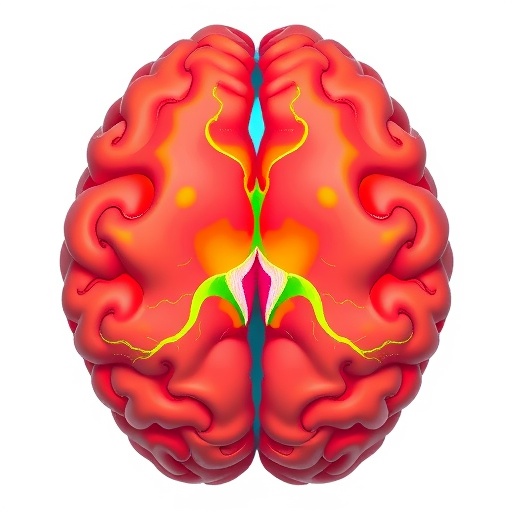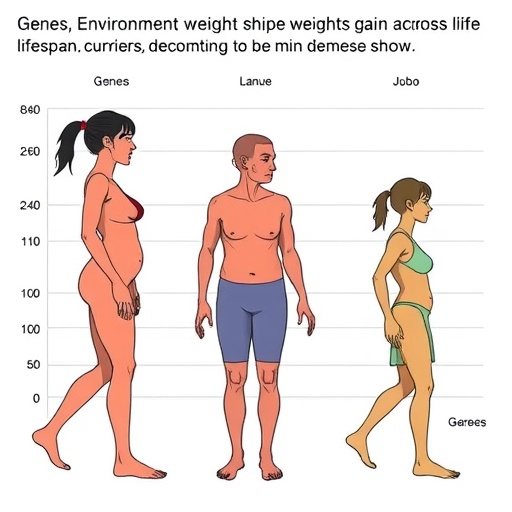A groundbreaking study recently published in Nature uncovers remarkable conservation and specific adaptations within the interneuronal architecture of the mammalian striatum, offering new insights into brain evolution and function. By leveraging cutting-edge single-cell sequencing technologies across an unprecedented diversity of mammalian species, researchers reveal how conserved neuronal types underpin fundamental brain circuitry while exhibiting nuanced species-specific variations. This comprehensive investigation integrates molecular, developmental, and anatomical perspectives, reshaping our understanding of basal ganglia evolution.
Central to this study is the use of a sophisticated array of model organisms spanning rodents, primates, and non-traditional species, including mice, rats, pigs, sugar gliders, and even harbour porpoises. Harnessing the power of single-cell RNA sequencing, the team meticulously dissected and analyzed striatal interneurons to unravel the transcriptional profiles that define these cells during key embryonic and adult stages. Such cross-species comparisons spotlight the evolutionary pressures shaping neural diversity in the striatum, a critical brain region involved in motor control and cognitive processes.
The researchers employed an Nkx2-1-Cre;Ai14 transgenic mouse model to fluorescently label medial ganglionic eminence derived cells, enabling precise isolation of interneuron populations. This genetic labeling strategy allowed for developmental time-course analyses, capturing interneuronal dynamics at embryonic days 15, 17, and 18. Complementary embryonic dissections from rat, pig, and opossum brains enriched the comparative framework, elucidating conserved gene expression patterns and trajectories across mammalian lineages.
Single-cell dissociation methods were optimized across species, using papain enzymatic digestion followed by fluorescence-activated cell sorting to ensure high purity of interneuron populations. With technological consistency maintained through 10x Genomics Chromium platforms, sequencing libraries were generated and processed uniformly. This rigorous approach minimized batch effects and guaranteed comparability, allowing for integrative data processing using advanced bioinformatics tools such as Harmony and Scanpy for clustering and dimensional reduction.
Key to the analysis was the identification and isolation of inhibitory neuron clusters, specifically those originating from the medial ganglionic eminence, known to give rise to striatal interneurons. The team applied Leiden clustering algorithms with iterative resolution tuning to refine subtype classifications, revealing molecular signatures that demarcate conserved interneuron classes. Subsequent cross-species data integration involved gene orthologue mapping and harmonization of transcriptomic landscapes, creating a pan-mammalian atlas of striatal interneurons.
Beyond classification, trajectory inference using pseudotime analyses illuminated developmental pathways driving interneuron differentiation. Tools like Slingshot and TradeSeq facilitated reconstruction of lineage dynamics across species, underscoring the preservation of core gene expression programs juxtaposed with lineage-specific deviations. Such findings hint at evolutionary adaptability layered upon an ancient neuronal scaffold, suggesting functional diversification tailored to species-specific neurobiology.
The team further interrogated published datasets from macaques, marmosets, and humans, extending their integrative framework to primate models. By employing robust methods for quality control and removal of confounding doublets or non-striatal neurons, they ensured accurate representation of interneuron subpopulations. Integration analyses using scVI and SAMap enabled the comparison of transcriptomic homologies and divergences among adult interneurons, revealing both conserved and unique molecular modules within primate basal ganglia.
Immunohistochemistry and RNAscope assays complemented the transcriptomic data, providing spatial and protein-level validation across species including ferrets, pigs, and macaques. High-resolution confocal imaging documented the anatomical distribution of key markers, corroborating the molecular classifications and emphasizing the functional implications of conserved interneuron types in the striatum. These multimodal validations reinforce the biological relevance of the sequencing findings.
This ambitious project faced complex computational challenges addressed by modular gene discovery with tools like Hotspot for unbiased partitioning of co-expressed transcripts. The combinatorial approach facilitated not just species comparisons, but also identification of conserved gene networks maintaining interneuron identity. Downsampling strategies in large datasets preserved cell-type diversity while optimizing computational tractability, a model for future multi-species transcriptomics.
Statistical rigor was upheld through repeated experimental validations and stringent filtering of sequencing outliers, ensuring robust reproducibility. The research team’s commitment to transparency and methodical detail is evident in their comprehensive protocols, spanning animal husbandry, tissue processing, and bioinformatics pipelines. Such thoroughness strengthens confidence in the study’s conclusions, positioning it as a cornerstone for evolutionary neuroscience.
In synthesizing molecular neuroanatomy across an extensive range of mammals, the work sheds light on the evolutionary design principles governing striatal interneurons. The balance of conservation and adaptation uncovered here not only deepens mechanistic understanding but opens avenues for exploring neurological disorders implicating basal ganglia dysfunction. Therapeutic strategies could benefit from this evolutionary lens, pointing to conserved targets with translational potential across species.
Ultimately, this study exemplifies the power of comparative single-cell approaches to decode brain complexity, weaving together genetics, development, and system-level architecture. It charts a path forward for uncovering the evolutionary narratives encoded within neural circuits, bridging gaps between model organisms and human brain biology. The insights gleaned promise to catalyze innovations in both basic neuroscience and clinical intervention.
The scientific community stands to gain highly from these revelations, as they challenge dogmas of brain cell type homogeneity and highlight evolutionary plasticity within mammalian neural circuits. Future research inspired by this work may expand to other brain regions or delve deeper into the functional implications of interneuron diversity. As single-cell technologies evolve, the resolution and scope of such comparative atlases will only increase, offering unprecedented vistas on our shared mammalian heritage.
By democratizing access to a multi-species striatal interneuron atlas, the authors invite collaborative exploration into the molecular underpinnings of brain function and evolution. Integrating genomics with neuroanatomy, their findings underscore that evolutionary conservation does not preclude sophistication or subtlety in neural differentiation. Instead, evolution appears to refine foundational elements, sculpting brain function with precision and adaptability.
This landmark contribution to neuroscience highlights an evolutionary dialogue encoded in the brain’s cellular composition, particularly within a pivotal node like the striatum. With single-cell resolution and multi-species breadth, it sets a new standard for studies interrogating the architecture and origins of interneuronal populations. As the field embraces an integrative cross-species perspective, a more comprehensive understanding of mammalian brain diversity and commonality will emerge.
Subject of Research: Conservation and diversification of mammalian striatal interneurons
Article Title: Conservation and alteration of mammalian striatal interneurons
Article References:
Corrigan, E.K., DeBerardine, M., Poddar, A. et al. Conservation and alteration of mammalian striatal interneurons. Nature 647, 187–193 (2025). https://doi.org/10.1038/s41586-025-09592-w
Image Credits: AI Generated
DOI: 06 November 2025
Keywords: Striatal interneurons, single-cell RNA-seq, mammalian brain evolution, basal ganglia, neuronal diversity, developmental neurobiology, cross-species integration, transcriptomics
Tags: basal ganglia evolution insightsbrain evolution and functionconserved neuronal types in mammalscross-species neural diversitydevelopmental dynamics of interneuronsinterneuron architecture in mammalsmammalian striatal interneuronsmolecular analysis of brain developmentmotor control and cognitive processessingle-cell RNA sequencing in neurosciencespecies-specific variations in brain circuitrytransgenic mouse models in research





